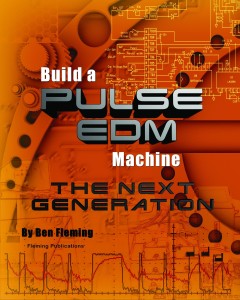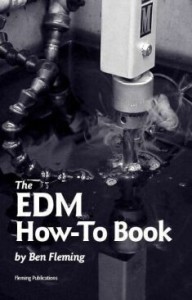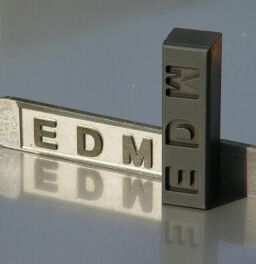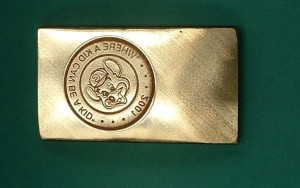

You will notice that I have two books on how to build an EDM. One is the RC power supply as described in The EDM How-To Book and the other is focused on a Pulse power supply described in Build a Pulse EDM Machine The Next Generation.
Often I am ask what is the difference between the RC and the Pulse machines. The primary difference is the Resistor Capacitor (RC) type, discharges a capacitor across “the gap” to remove metal and the Pulse machine does not.
The RC machine is simple to build, easy to control and low in cost. The RC circuit was the original design used by the Russians and was used in early commercial EDM applications. The biggest disadvantage of the RC machine is higher electrode wear than experienced with a pulse supply.
As stated, the pulse machine does not discharge a capacitor; instead the spark from the power supply is controlled by a timer and power Mosfets. The main advantage of a pulsed supply is decreased electrode wear and increased cutting speed (in most cases). Of course this comes at the cost of increased power supply complexity, and is much more expensive to build.
So which EDM would be best for you to build?

To answer that question ask yourself “what is the intended purpose of building an EDM?”
If the need is for a “tap burner” and electrode wear is not a serious issue, (which it usually is not when burning out broken taps and drills), then I suggest the simpler, easier to operate, and much less expensive RC described in The EDM How-To Book.
Don’t under estimate the RC machine it is more than just a “tap burner”, the EDM Logo burned into the file (see the photo above) was accomplished using an RC machine.
With the more sophisticated pulse machine described in the Build a Pulse EDM Machine The Next Generation book, broken taps and drills may also be removed but the machine is capable of doing more accurate and fine work such as squaring corners in milled pockets or machining difficult shapes in exotic materials. Finer surface finishes are more easily obtained with the pulse machine than are possible with the RC machine, see the Chuck E. Cheese photo below.
Chapter 18 in the book is on Jewelry Manufacturing and EDM Tips. If this type of work is your requirement, then a pulse machine is most likely exactly what you are looking for.

If you love to build and are looking for a different kind of project that offers a challenge of integrating electronics and mechanical systems an EDM may just be the ticket. Not many shops can boast of a true pulse EDM setting on the work bench for peanuts on the dollar.

